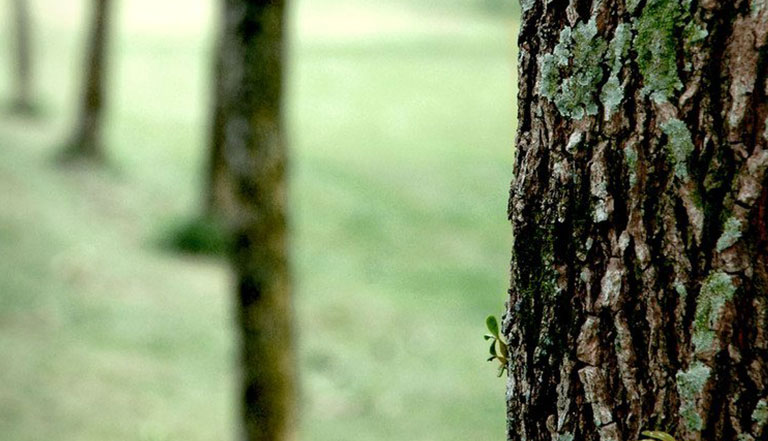Landowners need to consider the adequacy of their tree inspection regime.
How Often do you Inspect your Trees on Your Property

November 2018
The latest array of storms in the UK were no doubt the cause of much damage, the issue of liability for damage when a tree falls in stormy winds will resonate for councils and landowners to consider the adequacy of their tree inspection regime.
A person was seriously injured when a large mature lime tree fell across the road onto a single decker bus they were driving. The tree falling also caused extensive damage to the upper part of a house on the opposite side of the road which was only saved from more severe damage by the bus.
The tree was on land owned by a local Parish Council which had a duty of care to act as a reasonable and prudent landowner to avoid any danger and with a duty to undertake regular inspections. The Parish Council operated a system of inspecting the trees on its land every three years and considered that to be reasonable. The claim against the Council alleged that there should have been more frequent inspections.
By the time of the trial all parties were in agreement that the tree had fallen due to extensive decay in the root system extending into the base of the trunk, with high winds being a contributory factor or trigger. The location and type of the tree and consequences if it were to fall. It was set in the pavement of a busy public road; adjacent to a bus stop and shelter; close to property; leant towards the road; was over 20 metres high, old and heavy and as a result the court determined that it was in a high risk position and that if it failed it would cause severe damage.
The principles to be applied in determining the extent of a tree owner’s duty (by reference to the Forestry Commission Practice Guide (2000) (“the FC Guide”) were outlined to be;
- Where the tree is within an area where people, or high value property, are within falling distance – there is a duty to inspect;
- Where it can reasonably be foreseen that there is a risk of serious injury / damage – there is a duty to minimise that risk.
Such a tree in an extremely high risk position should have been inspected more frequently than every three years especially having regard to the FC Guide. The Council treated all of its trees with the same care; the court found that there needed to be a different approach taking account of the type, age and size of trees together with their location. This would provide for the application of a more rigorous system of inspection to those trees that needed special attention.
Adopting that approach the court concluded this lime tree should have been inspected at least every two years and ideally every 18 months when trees were in and out of leaf. Had the Council adopted that regime, the decay would have been discovered well in advance of the accident and the tree would have been felled or otherwise made safe.
Whilst the claimant was unsuccessful in his claim against the second defendant – a tree surgeon instructed by the Council to inspect and report on the tree, on the basis that his negligence had not caused the accident there was judgment in his favour as to the claim against the Council whose policy of inspection of the lime tree was inadequate.
There was an appeal however it was rejected, the Court of Appeal took the opportunity to reiterate the relevant legal principles as to a landowner’s duty in respect of trees. By reference to the judgment in Stagecoach South Western Trains v Hind [2014] they are (in summary);
- To act as a reasonable and prudent landowner;
- To act where there is a danger apparent to him / her (although that should not amount to an unreasonable burden or force the landowner to act as the insurer of nature);
- To carry out inspections on a regular basis;
- In certain circumstances (including where there is some form of trigger) to arrange for fuller inspections by an arboriculturalist;
- The resources available to the householder may have relevance as to the way that the duty is discharged.
Given that the Council was refused permission to appeal on the basis that the court had failed to apply these principles correctly, the appeal was directed only with the courts findings of fact and evaluation of the evidence. The focus of the appeal was accordingly the way in which the judge had approached the arboricultural expert evidence; that was rejected on appeal, concluding that the findings that had been made were those the court was entitled to make in considering the evidence before them.
What this means for you
Councils and property owners with responsibility for a substantial number of trees should be fully re-examining their tree inspection regimes (in particular for roadside trees) taking into account the size, type and location of each and every tree and the risk to both people and property in the event of a failure. Any regime that simply involves treating tree stock as a whole, essentially a “one size fits all” inspection policy with no regard to specific risk is likely to be considered insufficient.
Both the judgments at first instance and on appeal heavily relied on the FC Guide for their reasoning. Whilst it is just one of a host of literature available to landowners providing guidance as to safe practice for those concerned with tree inspection regimes, it’s clear that it carried significant weight and it would be worthwhile for landowners to review that guidance and consider whether their policies and procedures are consistent with it – at the very least in relation to the type of tree that we are concerned with here.
It’s worth bearing in mind that when looking at the adequacy of an inspection regime the fact that a tree appears healthy is largely irrelevant – of greater consideration is whether it is in a high risk location. It probably also did the Council no favours that they had failed to follow previous recommendations providing for inspection every two years when adopting the three year cycle. Good record keeping of the reports for each tree and taking account of advices given is essential.
Similarly Insurers for their part may, in the light of the outcome of this claim, seek greater detail as to the inspection regime being adopted when providing cover to landowners; generally but also with a special focus on roadside trees.



